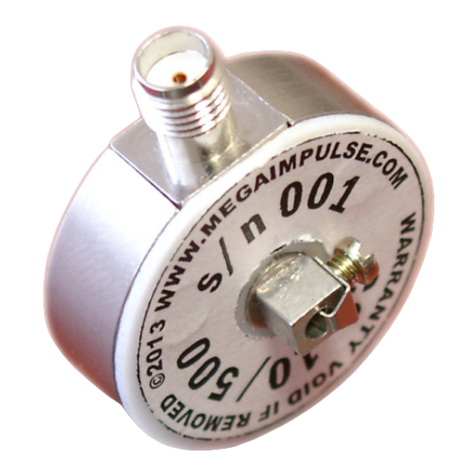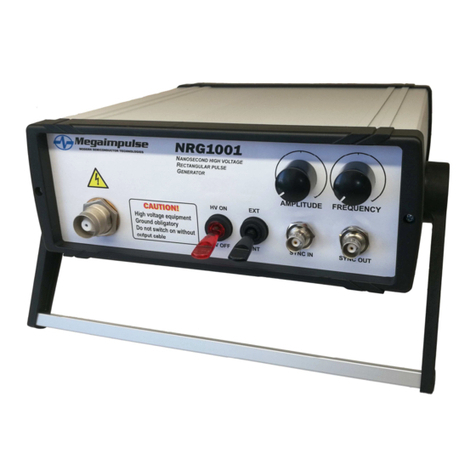
THEORY OF THE OPERATION
RC20 resistive coupler allows the precise measurement of the output pulse
waveform of NPG-series HV pulse generators (incident pulse for the load), as well
as the pulse waveform reflected from the load. To prevent distortion, the nanosecond
pulses, similar to high-frequency signals, should be transmitted from a generator to
load through high-frequency transmission lines, for example, coaxial cables. Most
of NPG generators have 75 Ohm impedance output coaxial connector and operate
with HV coaxial cables having 75 Ohm impedance as well. According to basic
principles of HF transmission lines, the pulse energy can be absorbed by the load
completely in the case of ideal impedance matching only, i.e. if the load impedance
is fixed and equal to the cable impedance. Unfortunately, this is impossible in the
discharge applications. The impedance of the discharge gap changes from a high
before the breakdown down to typically less than one Ohm after it. Part of the pulse
energy inevitably reflects from the load and travels back to the generator. RC20
coupler is a measurement tool of the incident and reflected pulse waveforms, which
allows us to calculate the energy of both pulses, and therefore, determine the energy
balance or energy efficiency of the discharge. In addition, the evaluation of the pulse
voltage on the load and pulse current is possible.
Let us consider the basic relationships between the incident and reflected pulses
as well as RC20 operation principles in more detail. The reflection coefficient
which is defined as a ratio of the reflected
VR
and incident
VI
signals is equal to:
=
[1]
, where
ZLOAD
is the impedance of the load;
ZCABLE
is the impedance of the cable.
According to equation [1], if the load impedance
ZLOAD
is higher than
ZCABLE
, then
is within 0…1 and the reflected pulse has the same polarity. If the load impedance
is lower than
ZCABLE
, then is within -1…0 and the reflected pulse has opposite
polarity. = 1 and = -1 in two extreme cases of open or short load, and the reflected
pulse amplitude is equal to the incident one.
The pulse voltage on the load
VLOAD
and pulse current
ILOAD
are equal to:
= + [2]
== () / [3]
If the load impedance
ZLOAD
is higher than
ZCABLE
, then the reflected pulse has the
same polarity, pulse voltage amplitude on the load is equal to the sum of the incident
and reflected pulses, i.e. higher than the incident one, and the pulse current through
the load is the incident pulse current minus the reflected one, i.e. lower than the
incident pulse current (see Fig.5).





























